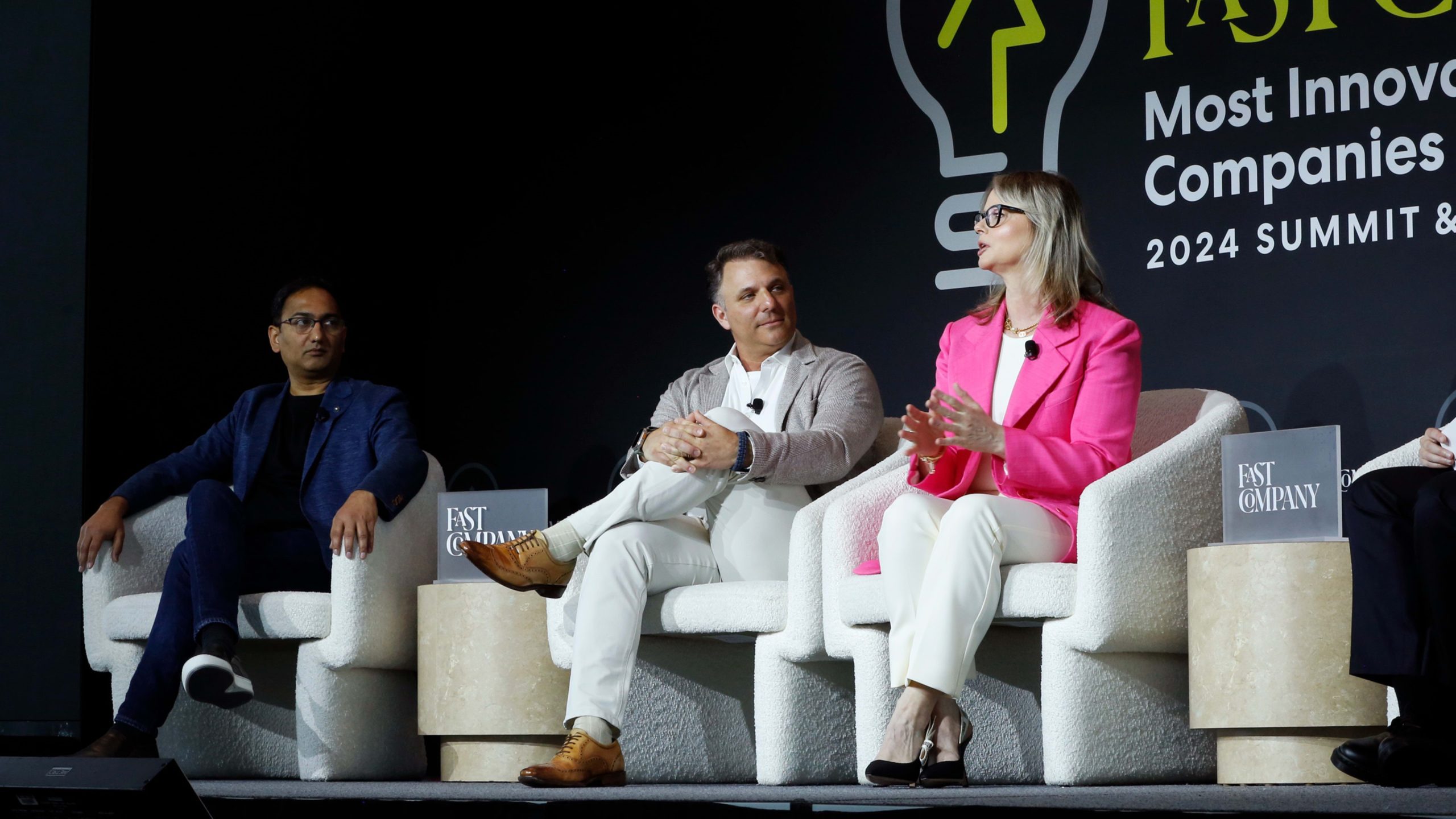How to make AI work for you
At Fast Company’s Most Innovative Companies Summit, execs from Microsoft, LivePerson, and Salesforce explained how to leverage AI at work.
AI is quickly becoming an integral part of the workplace, as tools such as ChatGPT continue to surge in popularity. The use of generative AI has nearly doubled in the past six months, with 75% of global knowledge workers using it in the workplace, according to Microsoft’s 2024 Work Trend Index Annual Report.
While these trends are set to continue, many workers have also expressed fear about the technology and what it means for job security.
At Fast Company’s Most Innovative Companies Summit last week, Colette Stallbaumer, general manager at Microsoft 365 and Future of Work; John Sabino, CEO of LivePerson; and Jayesh Govindarajan, senior vice president of Salesforce AI shared insights into how to make AI work for you and your team.
Become a power user
Stallbaumer said workers’ comfortability with AI ranges on a scale of skeptic to power user. Luckily, there are steps all workers can take to become power users. The first step is to shift your mindset to view your role as a series of tasks and the decide whether or not using AI would be beneficial. The second step is to get in the habit of using AI and continuously make the effort to experiment.
An important part of fostering AI power users is creating the pathways to train themselves on the technology. Stallbaumer noted that while business leaders say they understand the importance of training, only 25% of leaders Microsoft surveyed say that they plan to roll out AI training for their organizations.
Of course, as Stallbaumer mentioned, with every massive technology disruption, there will be some job displacement. And while AI is in early stages of mass adoption, it is evolving at a very rapid pace with the capacity of large language models doubling every six to twelve months.
“It’s a moment where you can choose fear or you can choose to lean in and learn,” she said. “And I think that’s what we’re trying to help every customer help their employees do is figure out how to not be a bystander, but actually start learning, start experimenting.”
Enhancing the customer experience
Sabino said the reason AI is exploding right now is because of its ability to create personalized customer experiences. Creating these experiences is very costly and time-intensive for humans to do alone. AI makes it easier to deliver personalization at scale.
According to a LivePerson study, 91% of business executives are excited about using AI with customers, but less than 50% of customers are excited. The key to closing that gap, Sabino said, is to design customer service models in a personalized way so customers feel valued.
“[AI] is going to be ubiquitous. It’s going to be like being able to read or do math,” Sabino said. “But what’s going to be equally as important is understanding how to engage and communicate and use these technologies to drive that connection with your brand, with your customers.”
Trust and train
Govindarajan said there are two key issues organizations need to address as they adopt AI: trust and training.
He believes humans will not be taken out of the equation when implementing this technology. So it’s essential they feel they can trust it and that they are prepared to use it. To create that trust, an organization needs to provide context for why they’re using AI. For example, Salesforce uses AI to synthesize data in sales deals allowing employees to focus more on the direct execution of the deal with the customer rather than replacing them.
“A lot of these deals require human touch,” Govindarajan said. “So now [employees are] focused on the one thing that is patently human. When you’re in the midst of a large deal, you want to be able to look in the white of the eye and make that deal and know that it’ll be executed the right way.”

ABOUT THE AUTHOR
(9)





